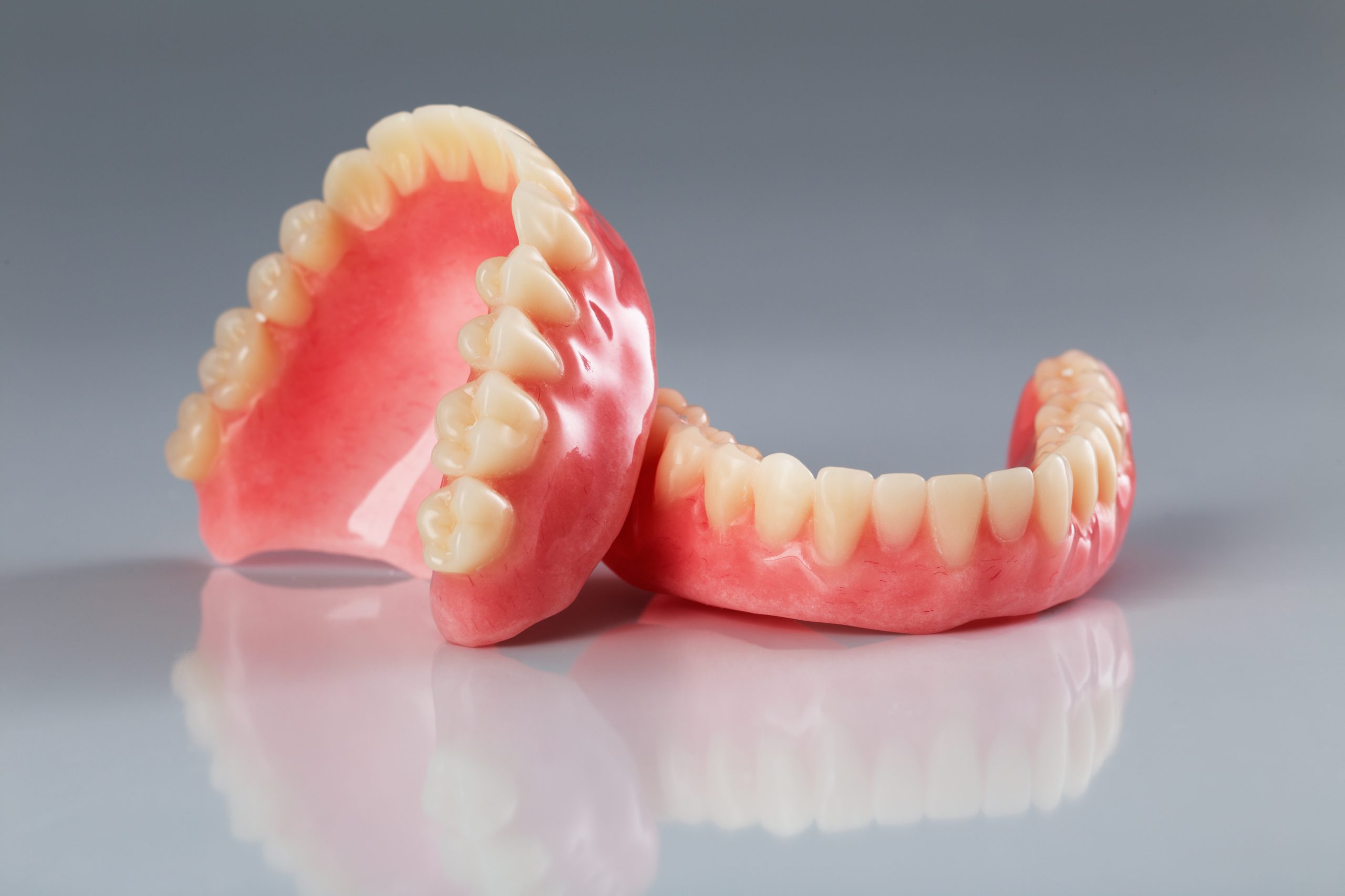Complete and Partial Dentures
When teeth are extracted or missing-for whatever reason, sometimes the best solution is to make
a Complete denture or Partial denture. When a tooth/teethare extracted, it is important to replace them
promptly to avoid ;compromise to the adjacent and opposing teeth. At Mission Laser dentistry, Dr. Faber would
be happy to discuss dentures with you. Compared to Implants and Fixed bridges, Partial Dentures and
Complete Dentures cost less and provide an immediate solution for missing teeth. The downside of Dentures
is that they are not permanently affixed-that is, they are removable appliances.

Complete Dentures
When a person is missing all of the teeth in one or both jaws, a complete denture may be made. Upper Jaw
(Maxillary) dentures are quite easy for most patients to wear. Lower jaw (Mandibular) dentures can be more of
a challenge for a variety of reasons. In either jaw, Dental Implants may be added to help stabilize and make
complete dentures more life-like. Complete Dentures must be relined every 3-5 years to account for changes
(resorption) in the jawbone and gum tissue that they were originally made in relation to.

Partial Dentures
For patients who are missing less than all of their teeth in either jaw, a Partial denture may be the best solution. Partial dentures utilize the remaining natural teeth for support and retention. Partial dentures are "engineered" to be as comfortable, secure and life-like as possible, but they are removable appliances, and hence they are inferior to implants. Sometimes one or more teeth may need to have crowns made for them to aid in the fit of the partial denture.Partial Dentures must be relined every 3-5 years to account for changes (resorption) in the jawbone and gum tissue as well as to ensure that the supporting teeth are not weakened.
At Mission Laser Dentistry, Dr. Faber would be happy to discuss how Complete or Partial Dentures could improve your dental health.